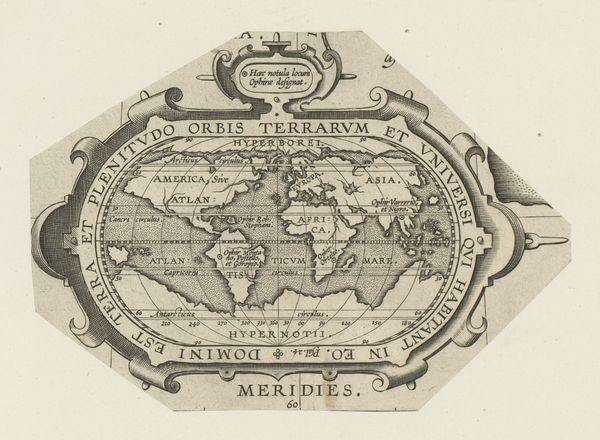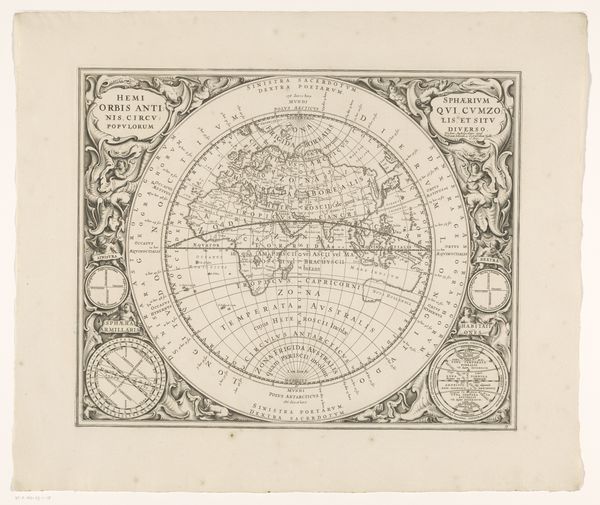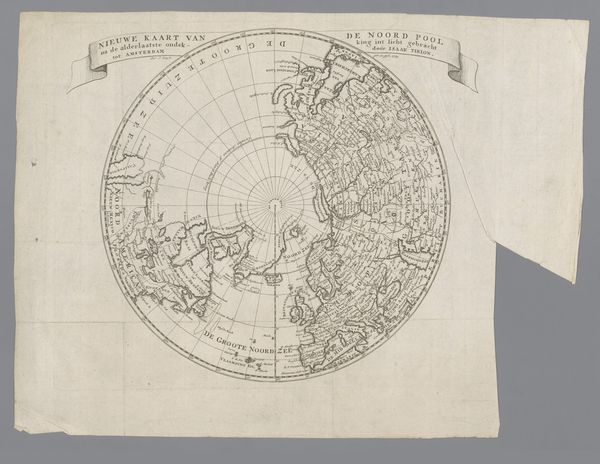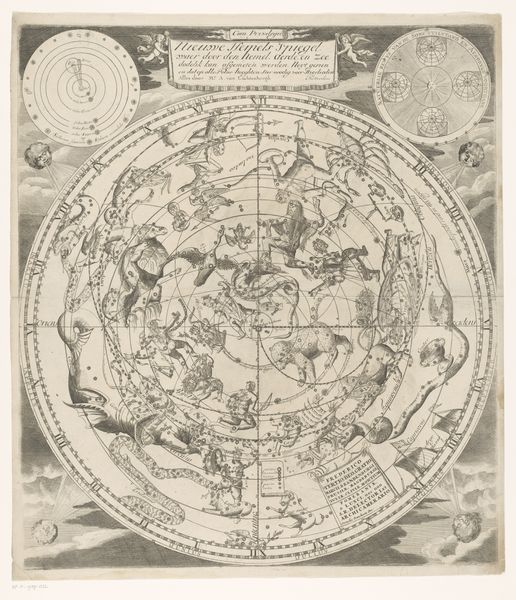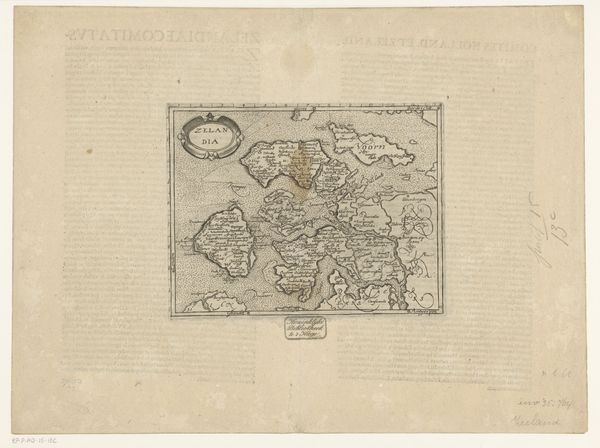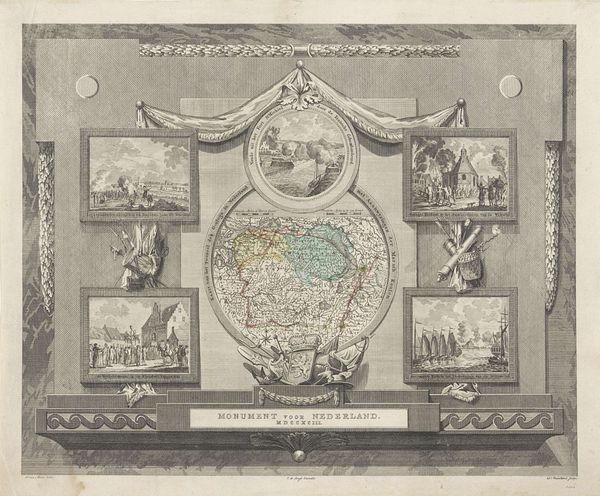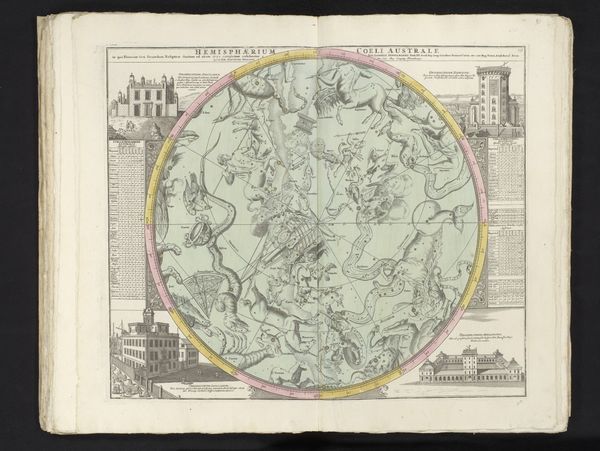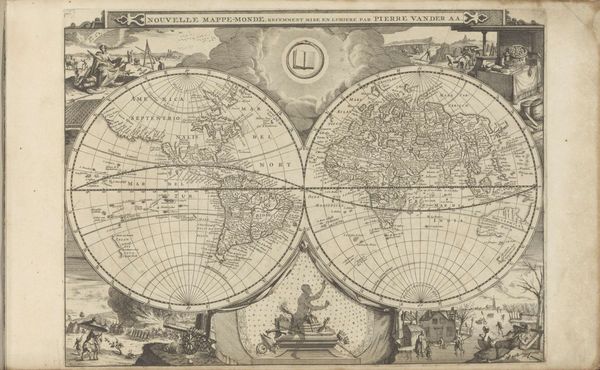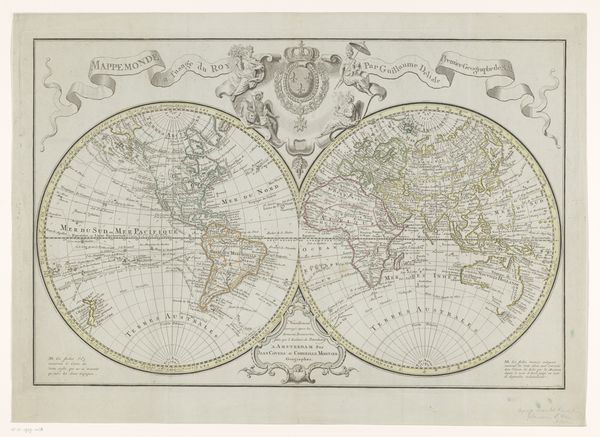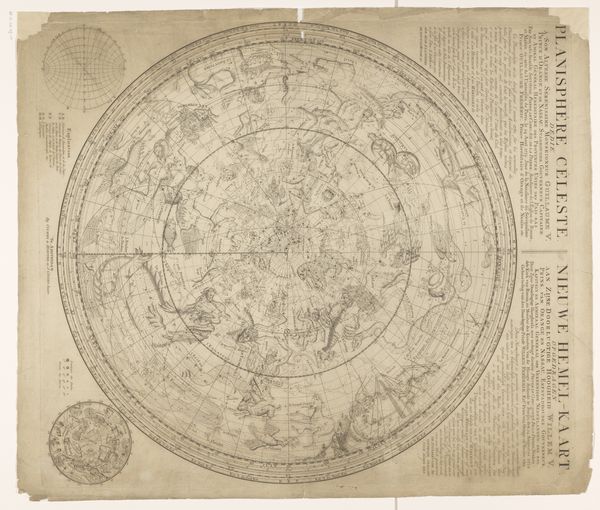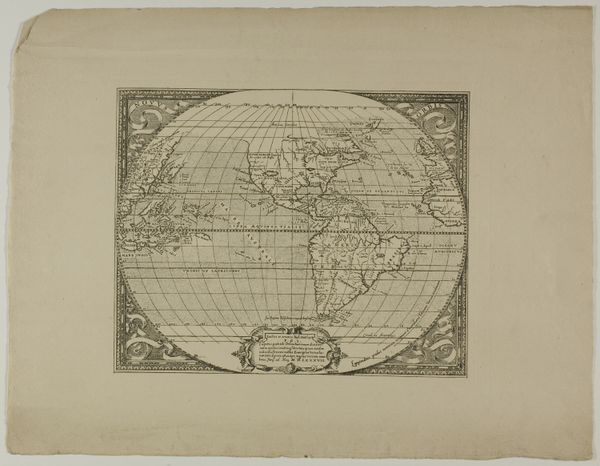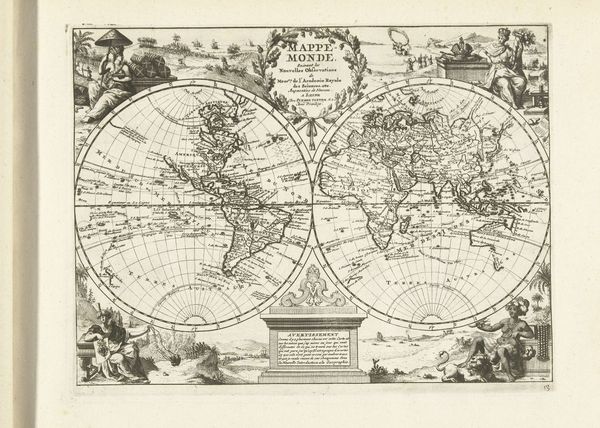
Ovale cartouche met een afbeelding van het eiland Lemnos 1572 - 1575
0:00
0:00
drawing, print, paper, engraving
#
drawing
#
aged paper
#
toned paper
# print
#
old engraving style
#
sketch book
#
paper
#
11_renaissance
#
personal sketchbook
#
geometric
#
pen and pencil
#
pen work
#
sketchbook drawing
#
history-painting
#
sketchbook art
#
engraving
#
columned text
Dimensions: height 184 mm, width 162 mm
Copyright: Rijks Museum: Open Domain
Curator: This engraving, dating from around 1572-1575, is entitled "Ovale cartouche met een afbeelding van het eiland Lemnos," or "Oval Cartouche with a depiction of the island of Lemnos." It’s currently held in the Rijksmuseum. The piece is attributed to Joannes van Doetechum the elder, rendered on paper using an engraving technique. What strikes you about it initially? Editor: There’s an undeniable old-world charm, right? It feels almost like gazing through a pirate’s spyglass at a lost island. It’s a little intimidating, a little exciting... there's definitely a story hiding here. The detailing is so intricate! Curator: The cartouche, or frame, enclosing the map itself is elaborately decorated with classical motifs. Notice the prominent lion's head at the bottom, representing courage and strength. And the cross-topped flourish at the top may be referencing its ties with Venice and the Eastern Orthodox faith dominant in the area at that time. Editor: Yes, it is clearly rich with symbolism. But looking at the map itself, the placement of ‘Septentrio’, ‘Meridies,’ ‘Oriens’ and ‘Occidens’, I like that the cardinal directions feel very dominant. There is no confusion in determining how you’re placed in the image. Curator: Absolutely. This image embodies more than just geographical information, it transmits a specific worldview and claims specific orientations to understanding location, time and identity. It highlights Lemnos's geographical features while simultaneously positioning it within a broader context of exploration and cultural knowledge. Editor: It definitely has the quality of being pulled directly from a well-worn traveler's journal, adding to that adventurous feel. You can practically smell the ink and the sea salt. Looking at the lines and font makes you wonder who poured over creating the piece and it makes you want to pour over examining it yourself. Curator: Exactly. Maps of this period often blended science with artistic expression. They served not only as navigational tools, but also as statements of power, knowledge, and cultural identity. They allowed its consumers to see their position and their known world more vividly. Editor: It really gives you that sense of stepping back in time, doesn't it? I feel like I understand more than just Lemnos when observing it.
Comments
No comments
Be the first to comment and join the conversation on the ultimate creative platform.
